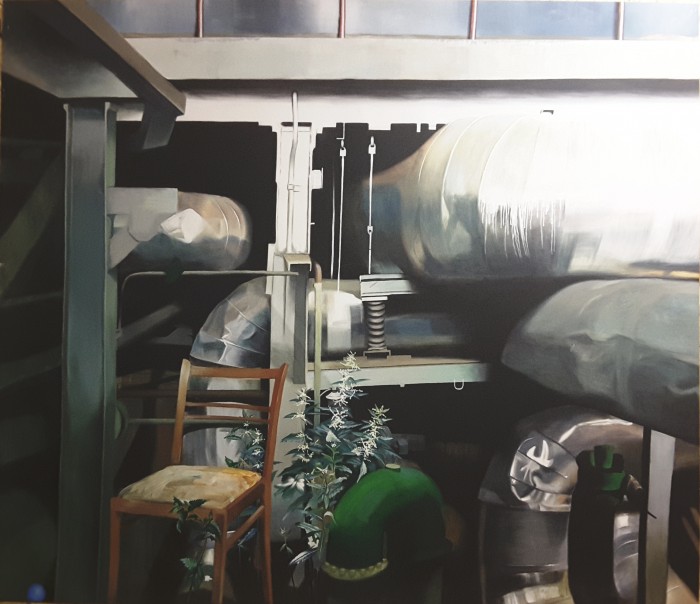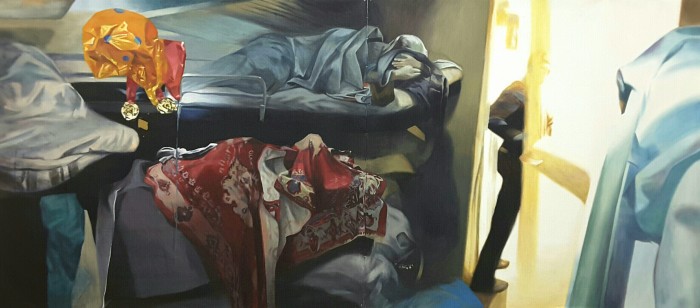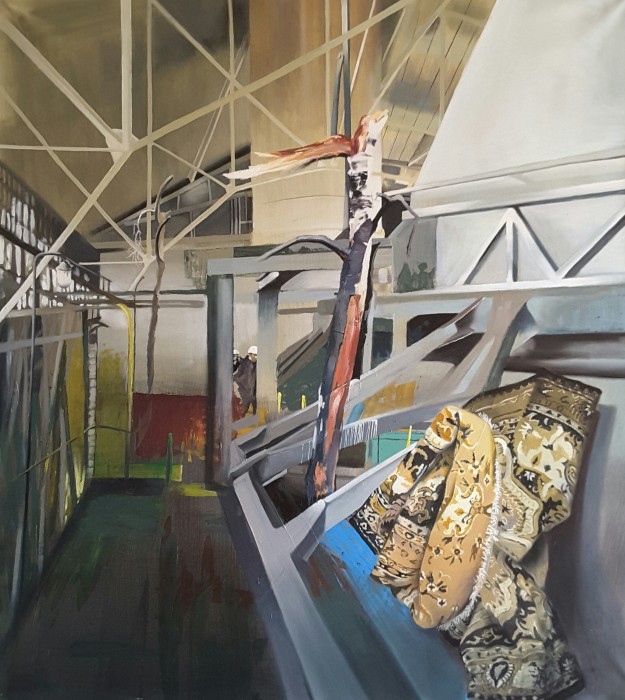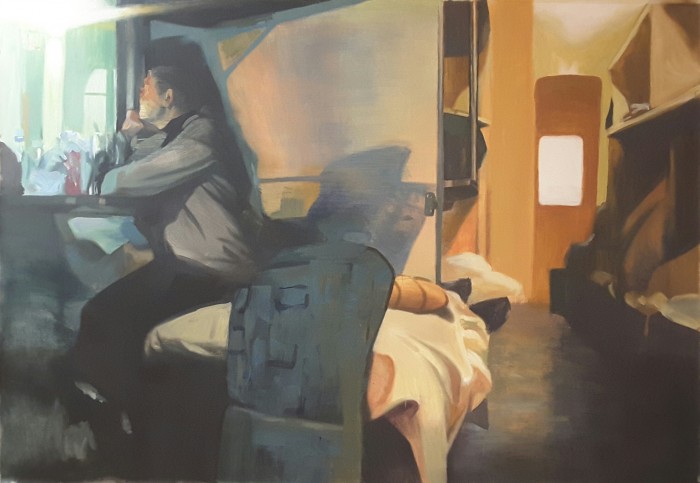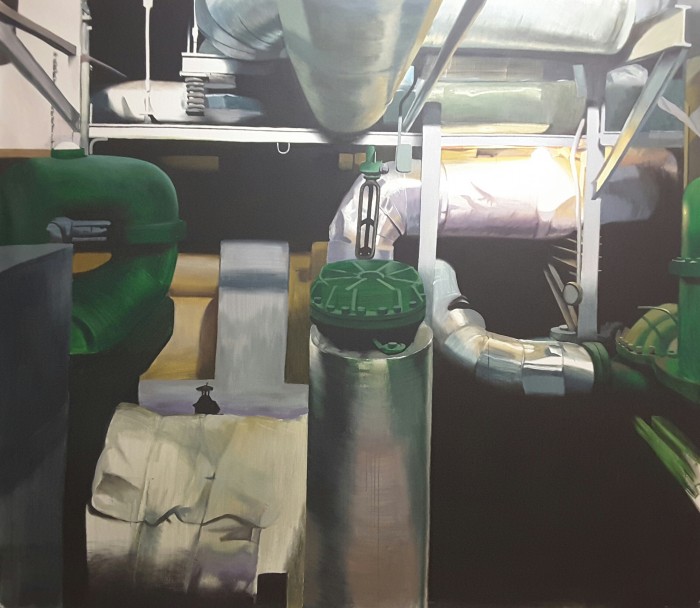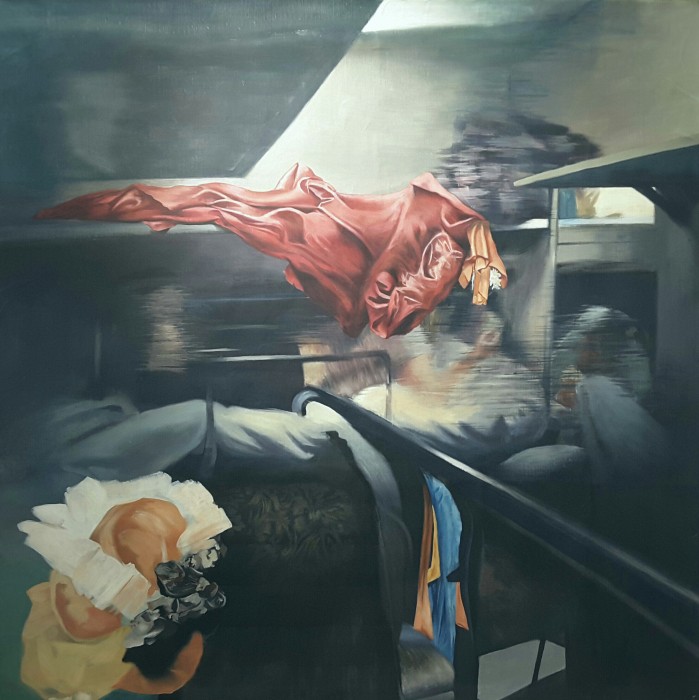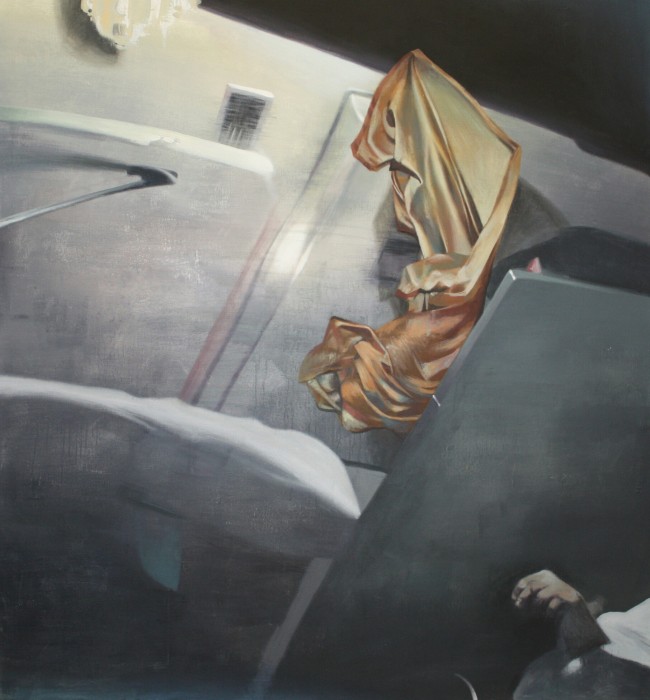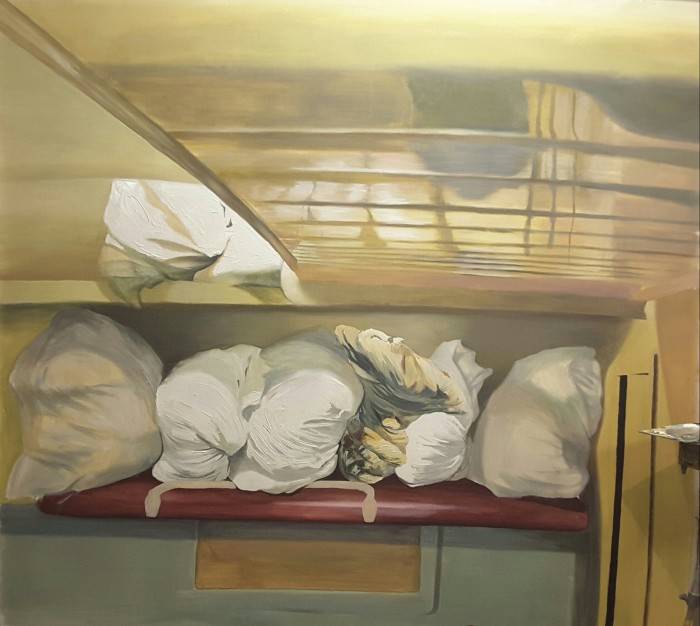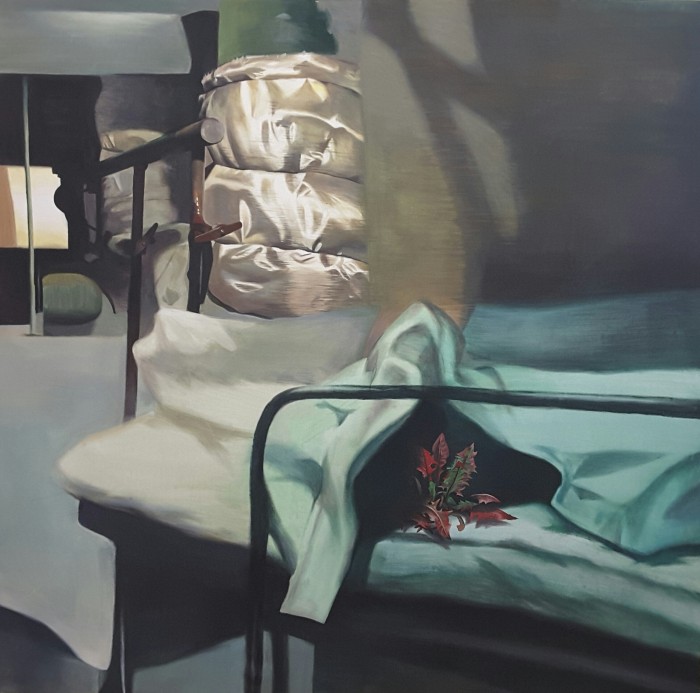The name of the new Kirill Garshin’s exhibition is due to the appearance of one of the "locations" of the cult computer game "Dark Souls". The central plot of its story is the fight for fire with the post-apocalyptic world falling asleep in the permafrost. Visually the game resembles the European Middle Ages, where the protagonist is a dead knight who managed to escape from the derivation of ice - the "undead". To flee in order to gain back his humanity at first, and then the fire together with his earthly governors, the kings of the ashes. But this is only one of many possible scenarios. The game narrative is non-linear and unfolds through a series of random encounters, that are added up into an appointed line in the head of the player. The choice which side to support depends on this process, whether to remain in the post-apocalyptic anabiosis or to fight to the very end for the warmth of life against the “undead”.
Actually, “Consumed King’s Garden" is the name of one of the many semi-abandoned worlds where the storyline of "Dark Souls" unfolds. A snail replacing the king - one of the picturesque images of Garshin. Besides the name the exhibition owes its exposition arrangement to the game, which imitates the non-linear narrative, divided into separate zones (partially secret) with its heroes, laws and atmosphere. The confrontation between a living, burning and, as it were, a living - “undead”, plays an important role for Garshin's mythology. Though in his case the medieval monsters are replaced by ordinary people, who at times give out their hollowness through a formal deformation of the image. The artist does not express his position openly. As in the case of the computer game, one has to determine his attitude to what is happening on his own.
What “locations" are there in the world of the "Consumed Snail’s Garden”, if to use the term from the gamer’s vocabulary again? The main action takes place in the Moscow-Saint-Petersburg and Moscow-Voronezh couchette cars and the half-abandoned park “Tanais" in Voronezh. Here, as always, Garshin chooses anxious and existentially tense situations for his stories. For a superficial look, it may seem that a couchette car or the place of "culture and recreation" could hardly claim to be a scene of struggle for life and death. But if you recall the family celebrations captured in the "Idle Days", it becomes clear that the painter is concerned with the very anxiety of everydayness, normality, of the being itself as it is. As the Garshin believes that the extreme oddity of human existence is being revealed in the luscious banality of life, an example of which can be a joint trip on a train or a walk around the common places of the urban environment. Of course, for this kind of disclosure one needs prepared sensitivity, but the serious work has been led by anonymous Internet creativity for a long time. It is enough to look into the specialized domestic social networks. There you can easily find lots of pages cultivating melancholic aesthetics very close in spirit to the mood of the “Idle Days" or "Consumed Snail’s Garden”. Usually they speak of a special modality of perception and interpretation of everyday life, which emphasizes the doom of human existence. And these are not the notorious groups of death, although they seem to be merely a more pessimistic part of the cultural radiation of Russian reality. Basically, the attempt to be frank about the visual specifics of life in the province (yes, and also the capital to a greater or lesser extent), even in its most banal manifestations (the domestic social networks consist of depressing photos of public transportation and sketches of dull city life), unequivocally led to the conclusion that the struggle between the “knights of fire” and the “ice undead” is in its full swing.
In one way or another, emotionally Russian folk art of the beginning of the 21st century is mainly being interpreted through despair and anxiety. And if despair is also typical for stagnant phenomena of the late USSR, then anxiety is known to be one of the most common mental emotions in the world of late capitalism. As the main feature of the latter one can distinguish the presence of a sense of fear without an obvious source. So in the world where the goal of development is the constant sublimation of abstract profit, a person is left with not so many stable connections that could serve for navigation and support. Yes, it was already known back in the days of the Manifesto of the Communist Party. But it seems that it is that small part that has remained more or less unchanged. And if you think this idea through and try to translate it into a mental reality expressed in visual language, we would get world of extremely flexible images ready to split and reassemble every single second. The world which is so typical for the contemporary art of recent decades.
Summarizing, it can be said that the creative method of Kirill Garshin consists of the estrangement, in the language of the Russian formalists, of reality taken in its most banal and seemingly stable combinations. It is significant that the artist is being intuitively attracted to the images of the movement. Whether it is the movement in space, as in the case of a couchette car, or the movement in time as in the case of the gradual desolation of urban places (and earlier with the fading of photos/ memory). It is the movement that becomes the inmost secret of our time in Garshin's interpretation, which art seeks to express. However, it is not a question of astonishment from the novelty of the movement or speed as such. It is the emotion characteristic of Italian futurists operating more than a hundred and odd years ago. On the contrary, we are dealing with the commonness of the movement, even a melancholy fatigue from it.A passenger of a couchette car in regard to his neighbor with a camera, as well as a pictorial image in regard to its viewer, is static.
On the one hand, formal techniques as well as Garshin’s plots suggest visible, even emphasized traces of the movement, but on the other hand it is difficult not to notice the regret in this regard. The artist seems to be mourning the destruction of the world taking place every moment. The most obvious traces of the transformation of the form lie on the figures of people or animals deceased and gone from our physical reality. Garshin can not go against the obvious, that is, the banality of the movement, and therefore the destruction, but can not accept it. In this sense, the “Consumed Snail’s Garden” inherits the desire to retain the departed with the prayer for the deceased or iconography (the snail, along with the king, the owner of the garden has long been dead), that in the opinion of Nikolai Fedorov, stand at the origins of human art. And if we continue this sequence up to the great masters of the Renaissance (the unconditional and conscious reference points of Garshin), then we can talk about the intuitive search by the young artist for something that in the aesthetics of the Soviet Marxist Mikhail Lifshitz was called "high realism" and assumed the position of a "great conservative." The specificity of this position, which is the main characteristic of known art history until the end of the 20th century, is the contradictory combination of rejection of the fashionable and progressive with a seemingly reactionary, but out of the best humanistic promptings, desire to preserve what is already existing. Conservatism of this kind not only refuses to participate in the race of progressive attainments, avoiding the admiration of the destructive influence of speed/ movement, or more characteristic of the philosophical literature of our days "acceleration," but also it can not be suspected in the fetishization of the old, original as the ideal artificially evoked to life. According to Lifshitz, there is an attempt in it to fix the tragedy of a situation where the original in its old fashion is already decidedly impossible, and the "progressive" is ethically unacceptable because of its destructiveness.
But what is the difference between the tragedy of today and the tragedy of Rublev's iconography, the art of the Renaissance, or the tragedy of the 20th century (when the important reference point for Lifshitz’s aesthetics was Garshin’s compatriot - the writer Platonov)? Without delving deeply into the socio-political analysis, you can fixate it with the artist's appeal to the metaphor of the computer game. Indeed, unlike PokemonGo, Garshin’s "Dark Souls" are much closer to the statics of a couchette car compartment or a picturesque image. In them the body of the player in relation to a monitor remains at rest. However, this does not exclude movement, albeit in virtual or in relation to outer space bodies. The rapprochement of the computer game and painting is possible in the conditions of special modes of existence, each of which reacts in a special way to the lack of high realism in our life and refuses to participate in the development of history. Even if it promises, sooner or later, the victory of justice. Is it necessary to add that the escapism of modern gamers seems to have long become a sociological fact and is almost openly attributed by the authors of not even a Marxist orientation to the specifics of the economic structure of the society?
Let's turn to one more source of inspiration for Kirill Garshin - Japan. Namely, to the extremely widespread social group also occupying a complicated position in relation to the progress movement. It is Hikikomori (き こ も り り or き 篭 も り り in Japanese). People striving for almost complete social isolation and spending time reading, playing computer games or watching anime. With their example we can conclude that if earlier the great conservatism was the prerogative of the creative aristocracy, then today in the developed countries, fortunately for the time being, the unemployment benefit can open the way to passive resistance to the general public. Yes, Russia is not Japan. The forms of crystallization of our daily lives differ just as much as the trip on a high-speed train from Tokyo to Osaka differs from a night couchette car from Moscow to Voronezh. A fan of anime from the capital of Chernozem region still has to sometimes go out of his room, because of the specifics of the domestic system of social support, to escape from the game to painting images (in order to earn money). But still. With all the differences in external attributes, it seems that we are dealing with a complex refraction in the art of the same and extremely contradictory phenomenon – contemporary reality.
Arseny Zhilyaev


